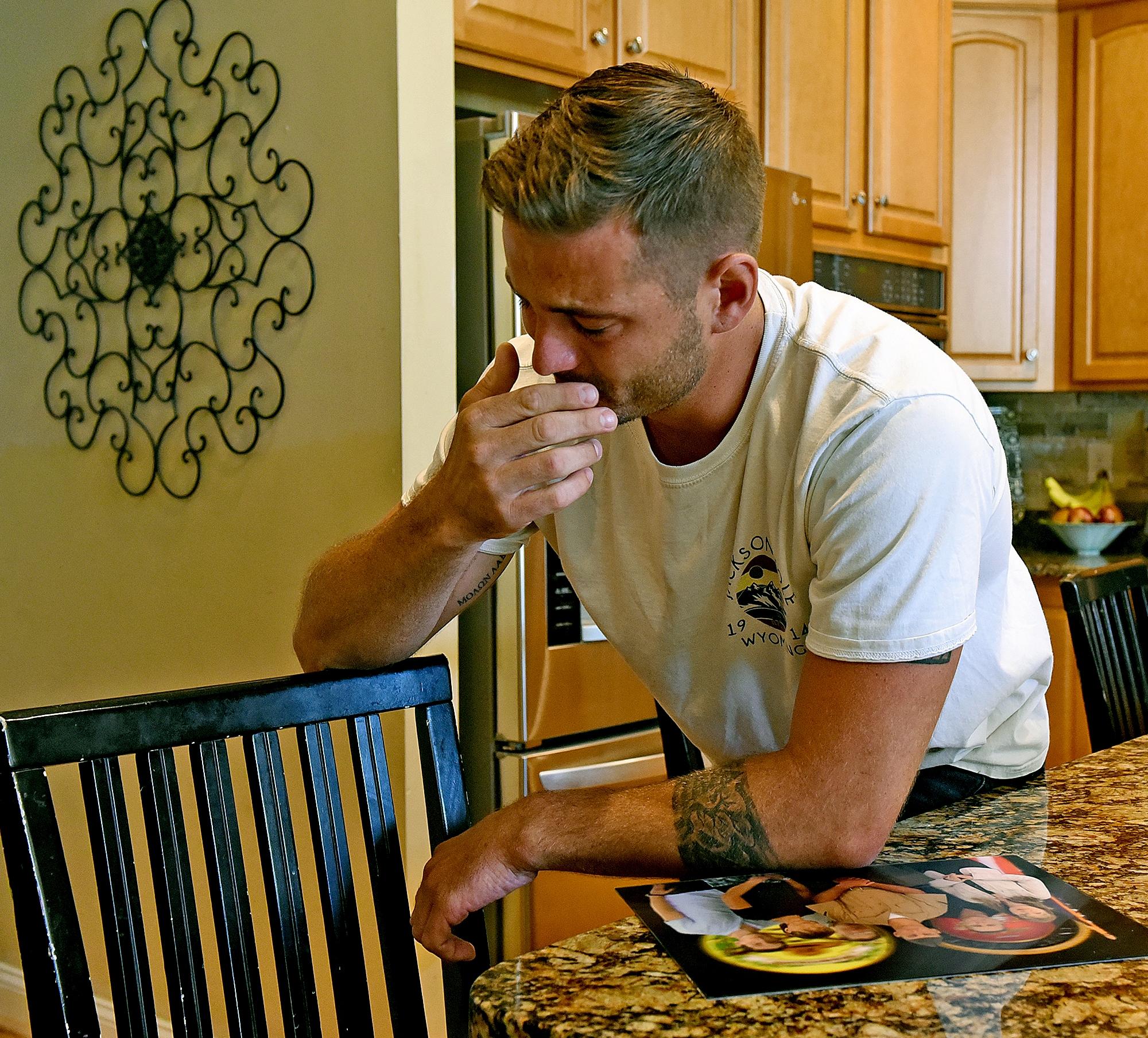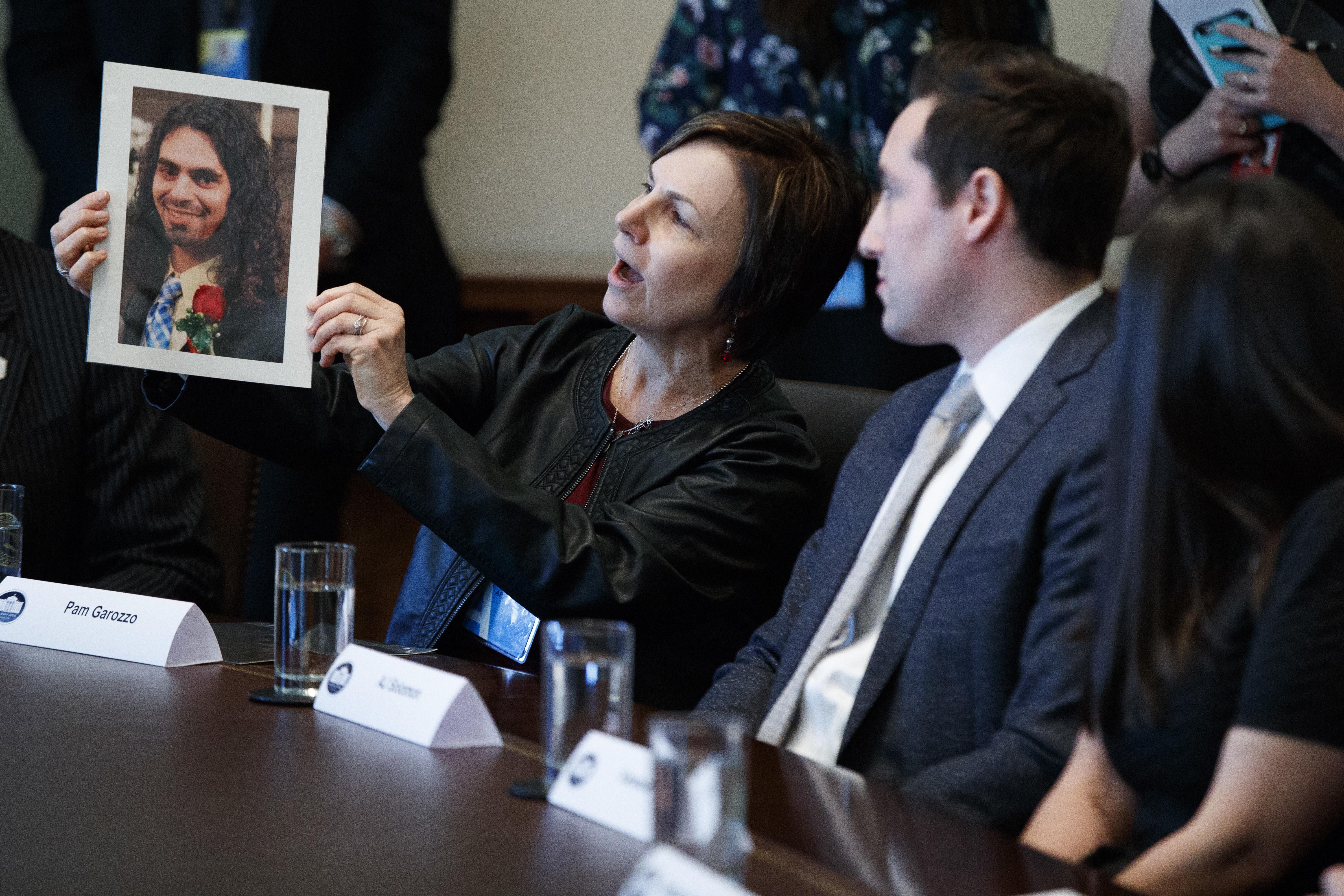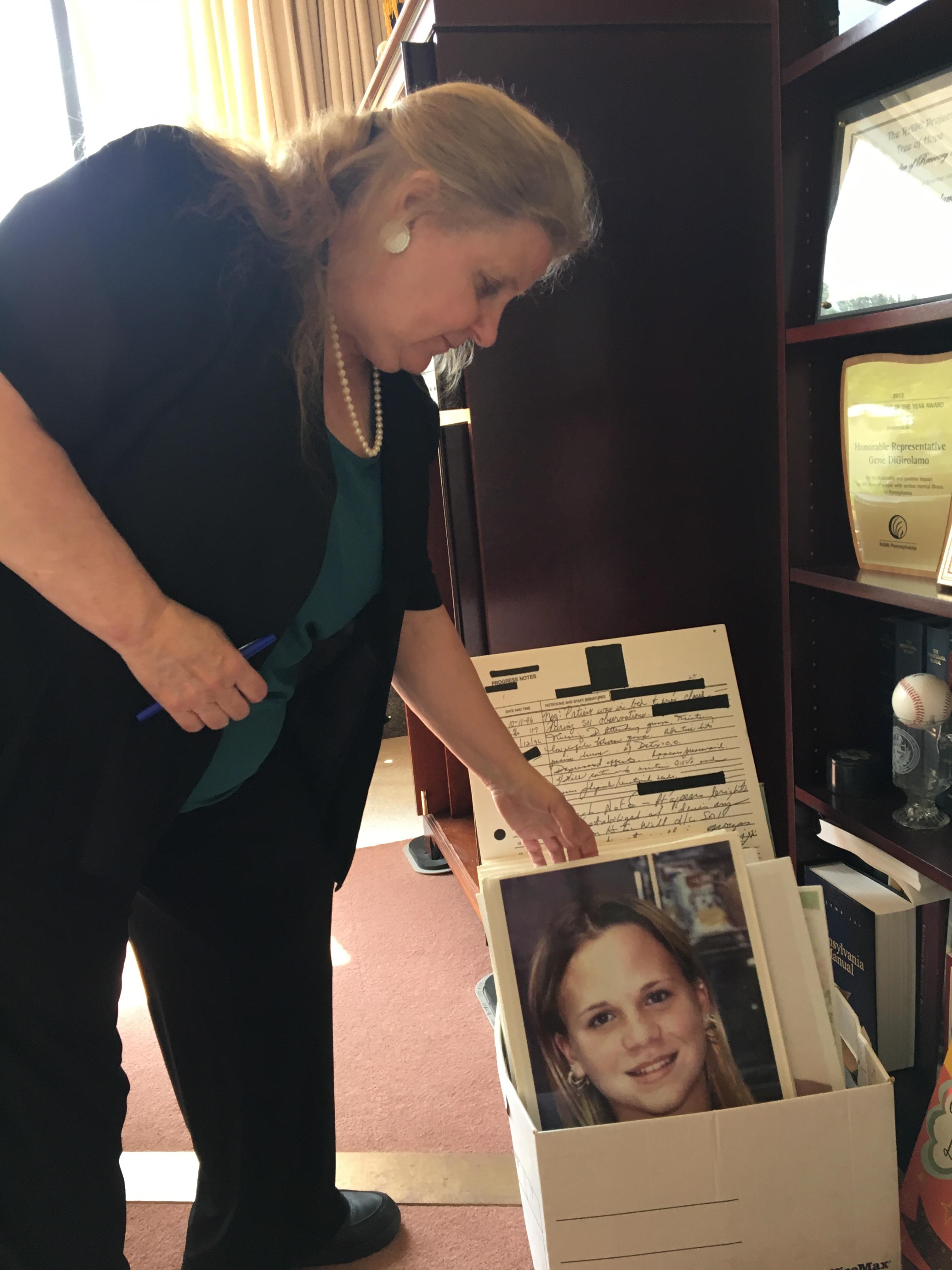
For people struggling with opioid addiction, one of the biggest barriers lies at the door to treatment
After surmounting other barriers that stand in their way to recovery, people struggling with addiction often run into the most substantial ones at the door to treatment: price and how to pay.
There are ways to cover it — private insurance, public assistance, personal finances. But the real price is paid by people who don’t get the help they need. And it’s adding up as the opioid crisis' death toll increases.
Only one in 10 people with addiction get treatment, according to the Substance Abuse and Mental Health Services Administration. The most commonly reported reason they don’t is the lack of adequate insurance coverage and inability to afford the cost.
“Treatment should be flowing like a river, but it's not and yet we are in the middle of an emergency,” said Deb Beck, president of Drug and Alcohol Service Providers Organization of Pennsylvania, a prevention and treatment advocacy group.
Some people require the structure and 24-hour care provided in inpatient treatment, Beck said, and that is where many battles are waged. Health insurers make patients and families jump through too many hoops to get care, according to Beck and treatment providers.
The average cost of inpatient rehabilitation for people with opioid addiction treatment was $16,104 per year in 2016 — a sharp increase from $5,809 in 2004, according to a Kaiser Family Foundation analysis. According to that same analysis, 38 percent of non-elderly adults with opioid use disorder had Medicaid coverage, 37 percent had private insurance, and about 17 percent were uninsured.
Those who are uninsured are less likely to receive treatment, but the barriers exist regardless of coverage, treatment providers said.
Most for-profit treatment centers only take people with private insurance or who can self-pay and exclude or limit beds for those with Medicaid coverage. Still, not all private insurance plans pick up the whole tab, especially for longer-term stays, said Amy Maurizio, director of inpatient drug and alcohol services at the Penn Foundation in West Rockhill.
“(Cost) is a big problem and many people won’t come in for treatment for that reason,” added Dr. William Lorman, medical director at Livengrin in Bensalem.
Both New Jersey and Pennsylvania legislators have taken action to address the issue of insurance coverage.
A New Jersey law passed last year requires insurers that are regulated by the state to cover the first 180 days of inpatient or outpatient addiction treatment at in-network facilities without the need for prior authorization.
Additionally, during the first 28 days of inpatient, intensive outpatient or partial hospitalization, insurers cannot intervene or conduct a review of whether the level of care is necessary. After that, reviews are permitted only every two weeks.
“The only thing that’s required is that the facility or the program notify us that the person is there,” said Suzanne Kunis, director of behavioral health solutions for Horizon Blue Cross Blue Shield of New Jersey.
At a minimum, under Pennsylvania's Act 106, fully insured plans, which are administered and paid for by the insurer, must cover up to seven days per year and 28 days per lifetime of inpatient detox; at least 30 days per year and 90 days per lifetime of non-hospital inpatient rehab; and at least 30 visits per year and 120 visits per lifetime of outpatient, partial hospitalization or intensive outpatient treatment, all without the need for prior authorization.
“The facility issues a letter of medical necessity, and we honor that for up to seven days of detox and 30 days of inpatient rehabilitation. And we don’t interfere, we don’t assess, we don’t do anything until that time is up,” said Dr. Richard Snyder, chief medical officer of Independence Blue Cross.
On the other hand, self-insured plans in Pennsylvania, which are administered by the insurer but are paid for by a group such as an employer, can require pre-authorization and a review of the level of care that is necessary, but they cannot be any more restrictive than they would be for physical medical care.
Snyder said it costs Independence about $5,000 per year to care for an average member, but those with opioid use disorder cost about $27,000 per year. If they go through treatment and stay on medication-assisted treatment, the cost drops to about $18,000 per year. But if they continue to struggle and remain on opioids it increases to more than $40,000 per year.
“I have been using this data to tell the employer groups that this is a valid business reason that goes beyond the ethical, moral and clinical reasons for treating patients,” he said.
Independence does not require people to go to a certain level of care first, Snyder said, noting that could be dangerous for some. There also are no limits on the number of times a patient is covered for detox, rehab or any other level of care, he said.
“It’s part of the disease and we need to expect it just like a patient with diabetes or heart failure can get readmitted many times — and we don’t restrict that,” Snyder said. “We try to help them, we try to protect them, we try to build a caring environment around them that ensures they take their medicine to avoid the re-admissions, but we don’t deny them and we don’t stand in the way of getting care.”
Kunis agreed.
“You can have one admission, you can have 101 admissions — you’re covered,” she said.
But Lorman, of Livengrin, said there are ways some insurers try to scale back coverage.
“For insurers, the minimum becomes the maximum,” he said, explaining that many insurers won't cover beyond the minimum required stay and deny additional time, even when it's recommended.
Treatment providers said they also have noticed insurers starting to limit or eliminate payment for additional stays. For example, if people return to rehab within 90 days, some plans will not pitch in for care or will pay a lower rate, Lorman said. When a medical provider prescribes additional inpatient time, 20 percent to 40 percent of requests will be denied by insurers, he said.
“We’ll tell them a patient is not ready to be released, and they are forced to a lower level of care too early and relapse,” he said.
Chris Peters, regional vice president of business development for Ambrosia Treatment Center in Medford, agreed it’s a problem.
“You may have benefits to go to a substance abuse treatment facility but the insurance company may not authorize you to access that level of care. People all the time say, ‘Well they kicked me out of the facility. … They made me leave.’ (The treatment center) wanted to keep you. Your insurance stopped approving,” he said.
Lorman said county and state funds are increasingly stepping in to supplement what insurers don’t cover, but the need far outweighs available funds.
Those receiving county or state funding also can face waits of days or weeks to get a bed in treatment. Many treatment centers limit beds for those on Medicaid, or don't accept it at all.

At Livengrin, Lorman said coverage for the uninsured depends on bed availability and sometimes the time of year. The facility sets aside 10 percent of its beds for those getting public funds, though it is currently using 20 percent of its facility to house people who don’t have private insurance.
“Our public rates are 50 to 60 percent lower than what is paid by commercial insurers,” Lorman said. “To take a lot of those patients, we lose a tremendous amount of money. As much as we want to bring them in, we can’t afford to.”
Patients receiving public assistance tend to be more costly, with more medical issues and co-occurring mental health problems, Lorman said, yet the amount provided to Livengrin from Medicaid covers only a fraction of their stay, which is more than $10,000 a month.
Some facilities will accept people who want to self pay, but not everyone can afford to do that.
“Look, if you've got 10, 20, 30 grand a month to spend, you don't have to worry about the insurance and what they deem as an appropriate level of care,” Peters said.
Penn Foundation's Maurizio said county funds and Medicaid are more likely to fund longer-term inpatient treatment and other follow-up services than private insurers. With short-term stays, insurers typically cover up to 28 days, “but beyond that is rarely covered,” she said.
New Jersey’s Medicaid program covers inpatient and outpatient treatment, medication-assisted treatment, among other levels, but effective Oct. 1, it also will begin covering long-term residential treatment and developing peer support and case management services, according to the state Human Services Commissioner Carole Johnson. Pennsylvania’s Medicaid program for behavioral health also covers most treatment levels, including long-term residential treatment and peer support services.
People who do find coverage with private insurance still often are surprised by high out-of-pocket costs, Maurizio said.
“Some need to put up $6,000 up front just to access services,” said Maurizio.
“Some plans have a lower deductible for inpatient but require high out-of-pocket costs for outpatient or services needed once they are released,” Lorman added. “That’s a problem because the best success rate is tied to those in continuous treatment for at least six months. That care is not all inpatient — it includes outpatient.”
Under many plans, the outpatient sessions — usually three times a week — require a co-pay, up to $50 to $60 a visit.
“Now they are really strapped and can’t do it,” Lorman said.
Melinda Goodwin, clinical director at Aldie Counseling, said many insurance plans require similar co-pays for visits for medication-assisted treatment.
“The co-pays for each medical dose are so high, ranging up to $50 to $80 a visit for some; then they go to individual therapy and group and face more co-pays,” said Goodwin. “That’s what jams people up.”
Last year, Independence expanded coverage for medication-assisted treatment using methadone, and removed some prior authorization requirements for other medications like buprenorphine and naloxone. Independence, Aetna and AmeriHealth New Jersey also took action to reduce cost-sharing requirements, which can include copays or deductibles, for naloxone.
Snyder said Independence wants people to continue with treatment.
“The recipe for success is not just inpatient care,” Snyder said. “The recipe for success is sustained therapy, starting with more restrictive inpatient care and going down the path to less restrictive outpatient care as they return to the community.”
Horizon also has been looking at putting navigators in the field to work with people more directly and help ensure they don’t fall into gaps in what Kunis said tends to be a fragmented system of care in New Jersey. In addition, the insurer is planning to roll out a program to connect people with peer specialists who will provide them and their families with additional support when they are discharged from inpatient.
“This is something insurance has traditionally not paid for and we’re looking to say that we believe if we are able to keep people in recovery and minimize any relapse that it will save us money overall,” Kunis said.
It’s all a lot more involved than insurers traditionally get, she admitted.
“It’s the old saying: It takes a village,” she said. “It’s way beyond insurers, it’s way beyond health care providers, it’s way beyond community resources. Everybody’s got to get to the table together."
